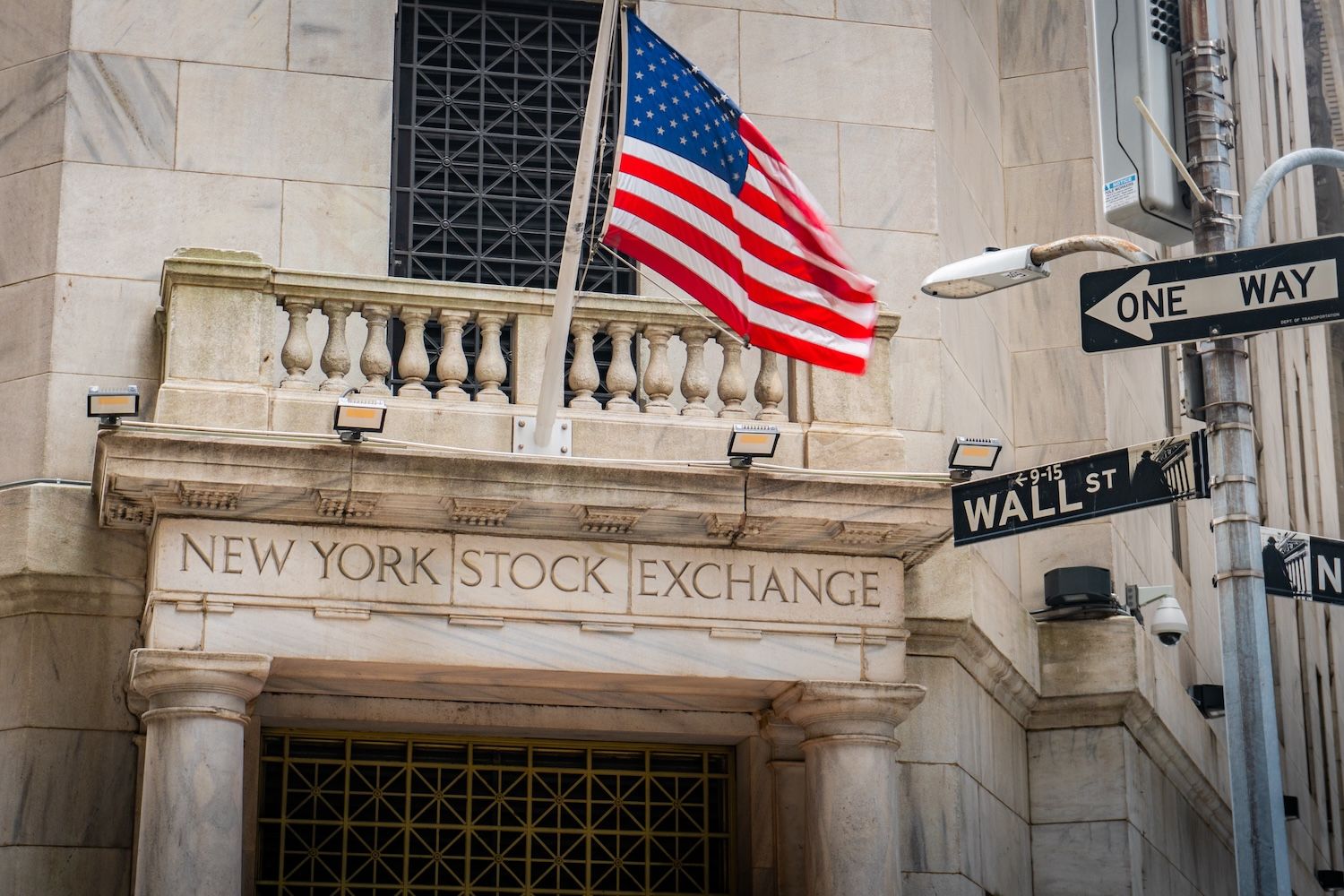Crypto Exchange Bullish Skyrockets 150% in Blockbuster $13.2B NYSE IPO
Wall Street gets a crypto wake-up call as Bullish storms the NYSE.
The digital asset exchange didn't just debut—it detonated, with shares screaming past traditional finance's wildest expectations. A 150% surge on opening bell? That's not a typo—that's institutional FOMO in HD.
While legacy traders were busy shorting innovation, Bullish pulled off the ultimate flex: turning a $13.2 billion market debut into what looks like a down payment on crypto's hostile takeover of traditional finance. The suits will call it volatility—we call it velocity.
Funny how the 'risky' asset class keeps bailing out portfolios while bond yields nap at zero. Maybe diversify into something that actually moves?

What to Know:
- Bullish shares opened at $90 and traded over 150% above the $37 IPO price, reaching as high as $118 before settling at $92.60
- The company raised $1.11 billion through its initial public offering, initially valuing the firm at $5.4 billion before market gains
- Bullish targets institutional clients rather than retail traders, positioning itself differently from competitors like Coinbase
Strong Market Reception Signals Crypto Sector Momentum
The trading performance exceeded expectations after Bullish priced its IPO at $37 per share, above the previously established range of $32-$33. Jeff Zell, senior research analyst at IPO Boutique, attributed the strong showing to an attractive initial valuation that prompted aggressive bidding during the pre-IPO process.
Market conditions have improved significantly for cryptocurrency companies following regulatory developments under the current administration. A series of favorable rulings, combined with corporate treasury adoption and exchange-traded fund inflows, has driven renewed interest in digital assets. Bitcoin, the sector's leading cryptocurrency, recently reached record highs amid this supportive environment.
The positive reception extends beyond Bullish's individual performance. Exchange operator Gemini and asset manager Grayscale have confidentially filed for public offerings, indicating broader industry momentum toward traditional capital markets.
"We've gone public today, and there's a slew of others that are going to follow us, and I think that is net beneficial, because it gives people more options in terms of how they access this asset class," Bullish President Chris Tyrer said in an interview with Reuters.
Regulatory Progress and Strategic Focus
Bullish operates with a clear regulatory strategy, currently nearing completion of a two-year process to obtain New York's VIRTUAL currency license, known as a "BitLicense." This license would authorize the company to conduct business in New York state, subject to compliance requirements including know-your-customer protocols, anti-money laundering measures, and capital standards.
The company plans to convert a substantial portion of IPO proceeds into stablecoins. These dollar-pegged cryptocurrencies have experienced significant growth since President Donald TRUMP signed the Genius Act, which established a regulatory framework for this particular segment of the digital asset market.
Peter Thiel's investment backing provides additional credibility for the exchange. Founded in 2020, Bullish deliberately targets institutional clients rather than retail traders, a strategic decision that positions the company for potentially more stable revenue streams.
Institutional Strategy Sets Bullish Apart
The focus on institutional customers represents a calculated approach in a sector where many competitors rely heavily on retail trading volumes. Michael Hall, co-chief investment officer and founding partner at Nickel Digital Asset Management, noted this strategy could provide advantages over time.
"A pure institutional strategy positions Bullish for more stable, recurring revenue than exchanges reliant on retail volumes, which tend to be cyclical and sentiment-driven," Hall explained.
Institutional cryptocurrency holdings are expected to increase following recent WHITE House directives aimed at allowing alternative investments in 401(k) retirement plans. This regulatory shift could expand the potential market for platforms like Bullish that cater specifically to institutional needs.
Leadership credentials also distinguish the company within the cryptocurrency sector. CEO Tom Farley previously served as president of the NYSE, bringing traditional financial market experience to the digital asset space.
Understanding Key Financial Terms
Several financial concepts are central to understanding Bullish's market debut and strategy. An initial public offering represents the first time a company sells shares to public investors, transitioning from private to public ownership. Market capitalization, or valuation, reflects the total value of all outstanding shares at current market prices.
Stablecoins are cryptocurrencies designed to maintain stable value by pegging to traditional currencies like the U.S. dollar. These digital assets have gained traction for their reduced volatility compared to other cryptocurrencies. The BitLicense represents New York's regulatory framework for virtual currency businesses, requiring compliance with specific operational and capital requirements.
Exchange-traded funds, or ETFs, allow investors to gain exposure to cryptocurrency markets through traditional brokerage accounts. Recent approvals for Bitcoin ETFs have contributed to increased institutional interest in digital assets.
Market Context and Competitor Landscape
Bullish joins a limited group of publicly traded cryptocurrency exchanges in the United States. Coinbase remains the sector's most prominent public company, having become the first crypto firm included in the S&P 500 index in May.
The broader cryptocurrency market recently exceeded $4 trillion in total value, reflecting growing mainstream adoption. This expansion has attracted increased attention from traditional financial institutions and corporate treasuries seeking exposure to digital assets. Regulatory clarity has improved substantially under the current administration's pro-cryptocurrency stance. These developments have encouraged more companies to consider public listings as a viable path for raising capital and achieving greater market recognition.
Closing Thoughts
Bullish's successful NYSE debut demonstrates continued investor appetite for cryptocurrency-related investments, particularly those targeting institutional markets. The company's focus on regulatory compliance and institutional clients, combined with strong market reception, positions it as a significant player in the evolving digital asset landscape. The performance may encourage other crypto firms to pursue similar public market strategies.

